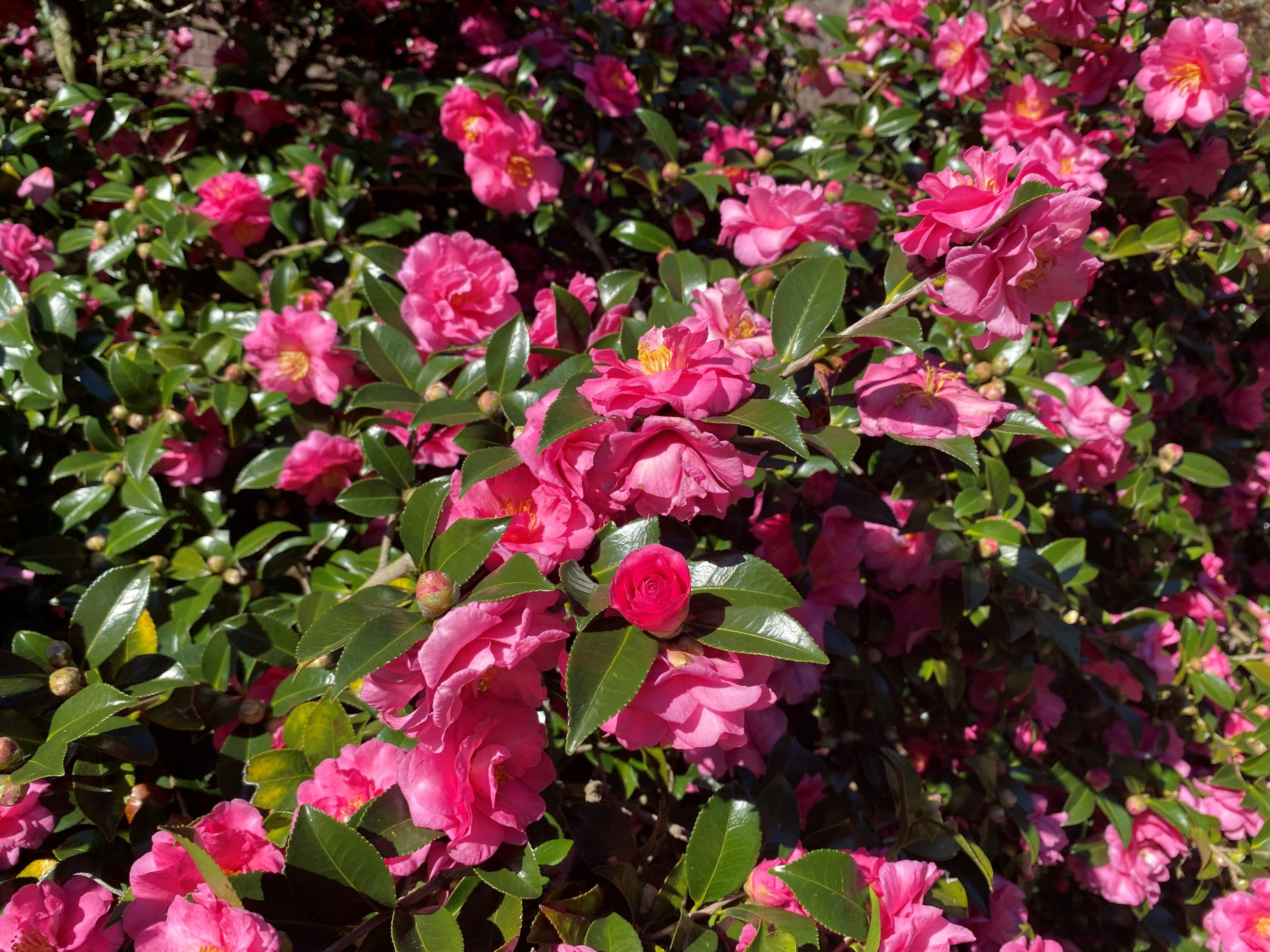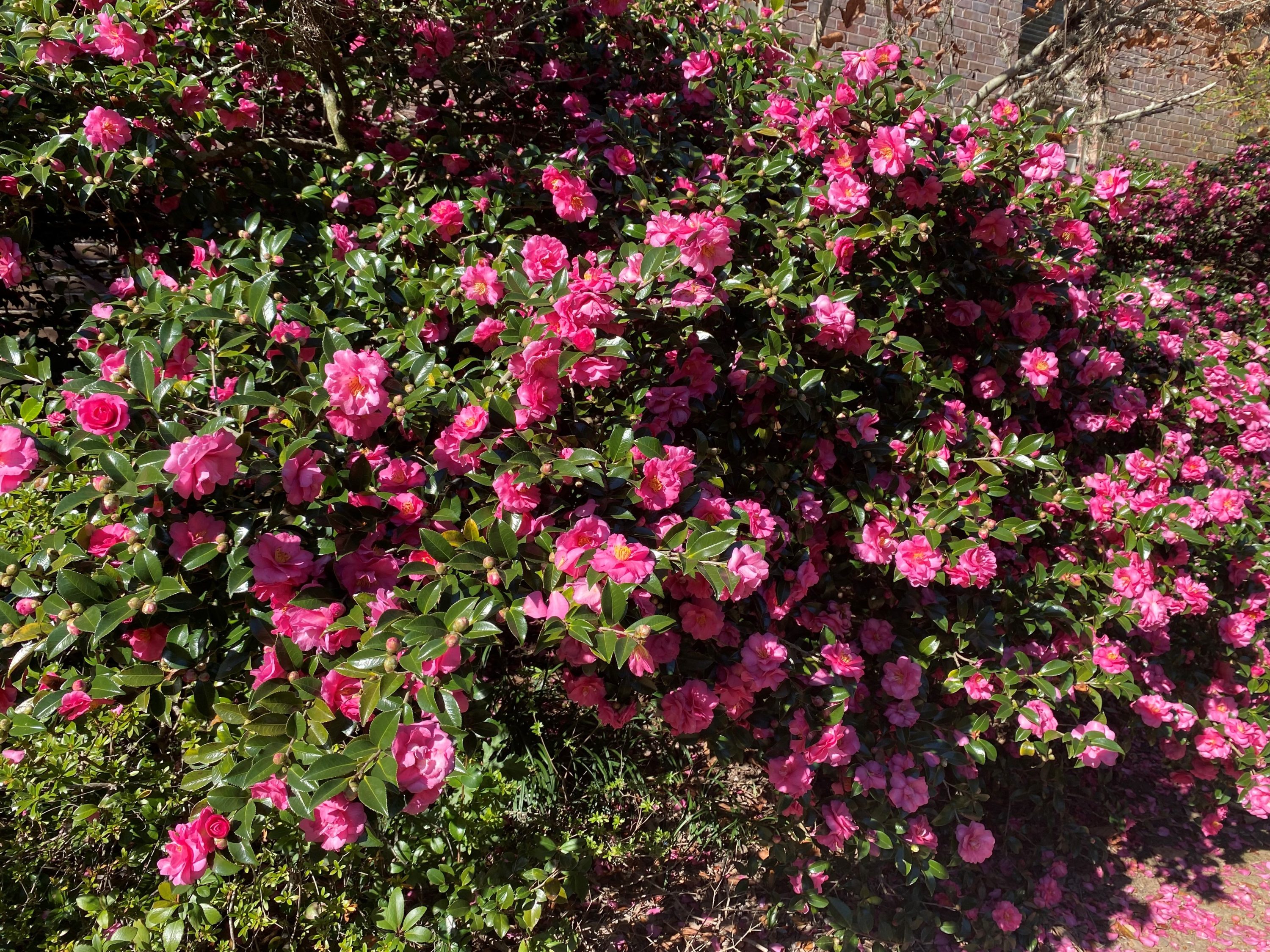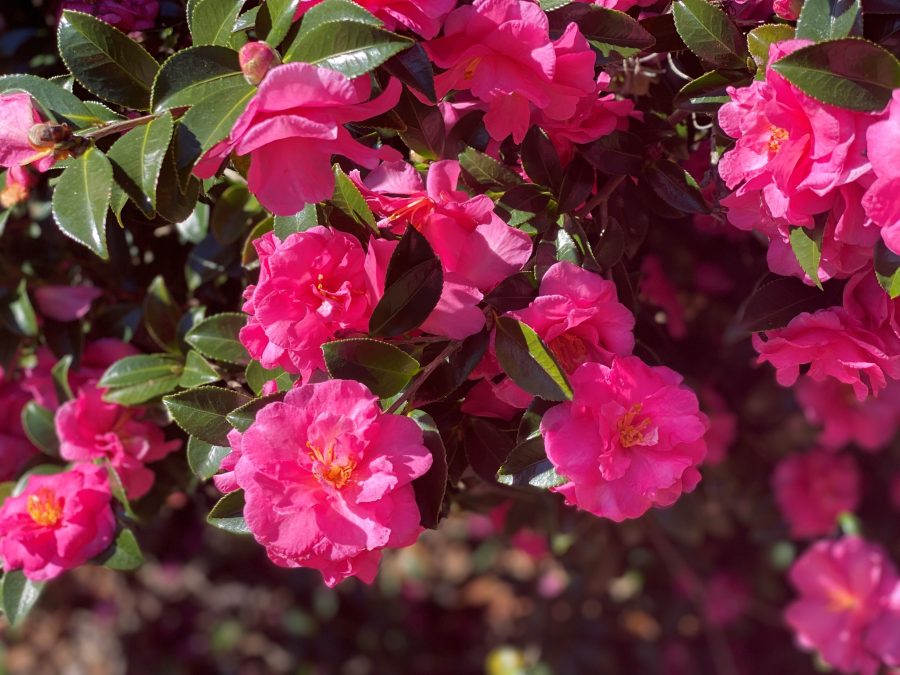
Catch Explore Louisiana in the 2024 Rose Parade
December 26, 2023
Thibodaux Regional presents Hot Shots Winter Soccer Nights
December 26, 2023By Heather Kirk-Ballard LSU AgCenter Horticulturist
If you’ve noticed the sudden explosion of beautiful rose-pink flowers dotting the landscapes these past few weeks, you have witnessed one of the top-performing shrubs for Louisiana landscapes: ShiShi Gashira.
This plant is often listed as Camellia sasanqua in the trade, but it is actually part of the Camellia hiemalis species. Named a Louisiana Super Plant in the fall of 2010, ShiShi Gashira has long been an outstanding shrub for the landscape, and its history goes back hundreds of years.
According to the American Camellia Society, ShiShi Gashira originated in Ikeda City, Japan, where it was first mentioned in recorded history in 1894. It was featured in a nursery catalog as early as 1935. This shrub has been around for a long time, and its reliable beauty is why it is such a staple in the landscape.
This evergreen, dwarf shrub has a profusion of rose-pink, semi-double blooms with golden-yellow centers on stems with dark green, glossy foliage in late fall through early winter. ShiShi Gashira makes an excellent selection as a foundation planting around houses because of its gorgeous green foliage that remains year-round. The winter bloom time brings beautiful color to the landscape as many of our other landscape plants are going dormant.

The glossy, dark green foliage of ShiShi Gashira stays on the shrub year-round, making it an excellent choice as a small, evergreen foundation shrub. Photo by Heather Kirk-Ballard/LSU AgCenter
ShiShi Gashira camellia shrubs can be grown as a focal piece of the landscape, planted en masse to create a stunning splash of color or grown closely together to create a colorful low hedge. They have a unique weeping form that can be used to create a beautiful backdrop or winter woodland garden setting.
ShiShi Gashira grows at a moderate pace, reaching a mature size of 4 to 5 feet tall and 6 to 8 feet wide. Older plantings — such as the specimens at the J.C. Miller horticulture building on the LSU campus — can reach heights of 6 or more feet.
In general, camellias are a slow-growing shrub best suited for USDA hardiness zones 7 to 10. Unlike the traditional camellias from the Camellia japonica species that require filtered sun, ShiShi Gashiras grow well in full sun.
Camellias prefer well-drained, acidic soils with a pH between 5.0 and 6.0. They pair well with companion plants that also prefer more acidic soils such as azaleas, Japanese maples, lily of the valley (pieris), rhododendrons and hydrangeas. You’ll often find camellias as an understory to pine trees, which thrive in acidic soils.
In south Louisiana, alkaline soils can cause problems. In north Louisiana, flower buds are often damaged by colder temperatures.
It is important to maintain a 2-to-3-inch layer of mulch year-round to prevent weeds, provide organic matter, help retain moisture and protected roots from intense summer heat. Water regularly when the top 3 inches of soil is dry.

On average, ShiShi Gashira camellias grow to 4 to 5 feet in height. Older plantings can reach heights of 6 to 8 feet. Photo by Heather Kirk-Ballard/LSU AgCenter
Older, established plants can live off rainfall and are a great deal more tolerant of full sun and drying winds. New plantings should be watered regularly, and one should consider installing irrigation. Younger plants are less tolerant of sun and winds. Fertilize with an azalea-camellia fertilizer or a complete fertilizer such as 13-13-13 in late winter before new growth begins.
Camellias, like most flowering shrubs, should be pruned immediately after they have finished blooming. This allows the shrub time to form new growth and flower buds before the next cycle of bloom. Pruning does not have to be done annually, just as needed.
While camellias don’t have any major disease problems, tea scale is a common insect pest of flowering camellias. Scales are small insects that attach themselves to the leaves, mainly at the midrib of the leaf, and extract plant juices.
In the spring, the next generation of scales hatch from their eggs. Known as crawlers, these young scales eventually attach themselves to the undersides of leaves. Adult scales are very resistant to insecticides.
Treat early in the crawler stage. Apply insecticides so that they cover the bottom surface of the leaves. Repeat treatments may be needed with heavy infestations. Light to moderate infestations can be treated with oil sprays when temperatures are cool so as not to burn the plants. It may take two to three years to bring heavy infestation under control.
Every landscape should feature a camellia of some sort (in my humble opinion). There is no limit to the opportunities, with more than 200 species and 20,000 varieties of camellias available.
Camellia flowers come in all sorts of colors from white, red, pink and variegated varieties with several different flower forms. Individual blooms are relatively large — up to 5 inches across — and come in many forms: single, semi-double, formal double, peony, anemone and rose forms. The blooming opportunities seem endless, and they are a wonderful cut flower to be enjoyed indoors and shared with loved ones.









